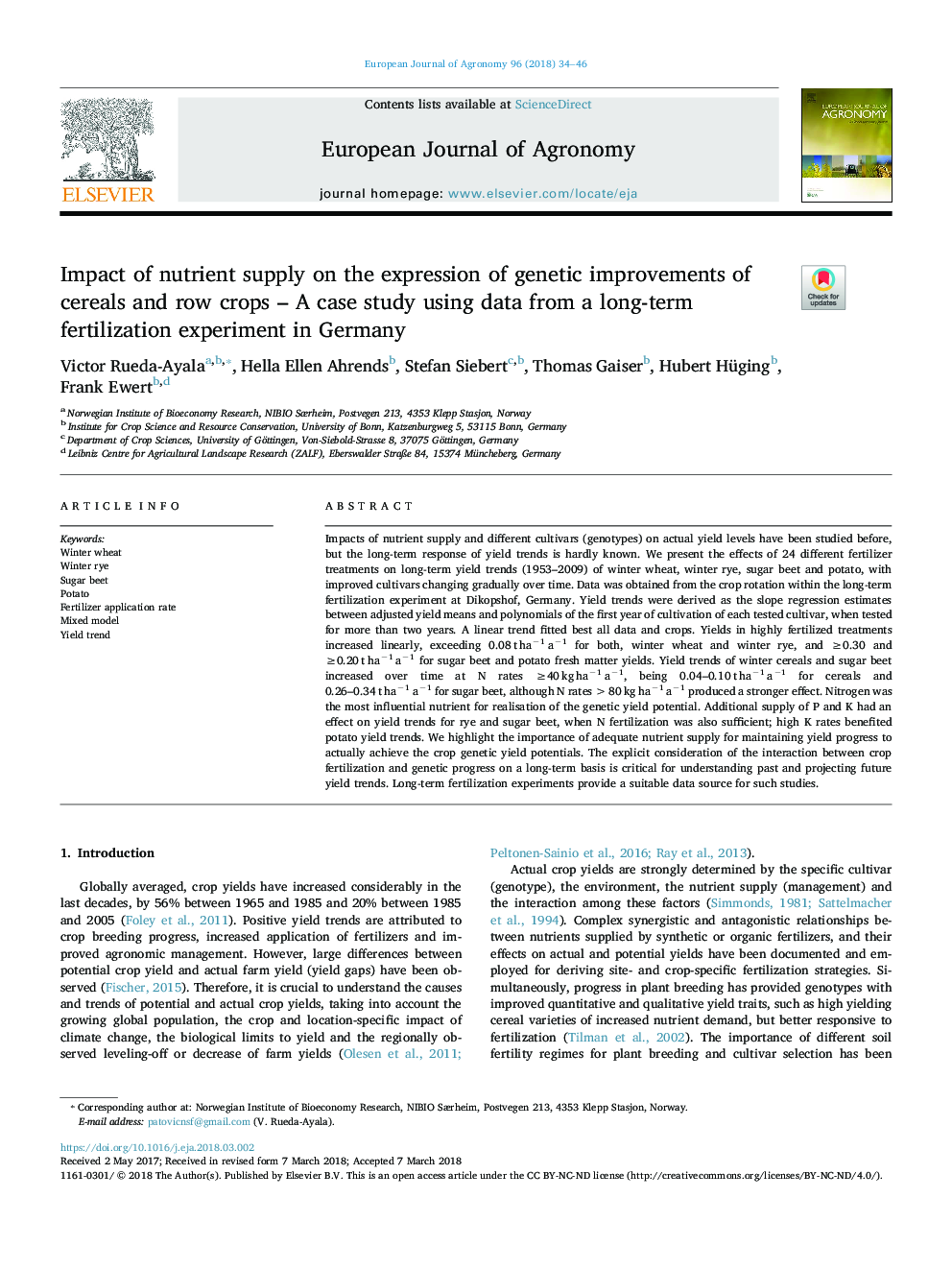| Article ID | Journal | Published Year | Pages | File Type |
|---|---|---|---|---|
| 8878900 | European Journal of Agronomy | 2018 | 13 Pages |
Abstract
Impacts of nutrient supply and different cultivars (genotypes) on actual yield levels have been studied before, but the long-term response of yield trends is hardly known. We present the effects of 24 different fertilizer treatments on long-term yield trends (1953-2009) of winter wheat, winter rye, sugar beet and potato, with improved cultivars changing gradually over time. Data was obtained from the crop rotation within the long-term fertilization experiment at Dikopshof, Germany. Yield trends were derived as the slope regression estimates between adjusted yield means and polynomials of the first year of cultivation of each tested cultivar, when tested for more than two years. A linear trend fitted best all data and crops. Yields in highly fertilized treatments increased linearly, exceeding 0.08â¯tâ¯haâ1â¯aâ1 for both, winter wheat and winter rye, and â¥0.30 and â¥0.20â¯tâ¯haâ1â¯aâ1 for sugar beet and potato fresh matter yields. Yield trends of winter cereals and sugar beet increased over time at N rates â¥40â¯kgâ¯haâ1â¯aâ1, being 0.04-0.10â¯tâ¯haâ1â¯aâ1 for cereals and 0.26-0.34â¯tâ¯haâ1â¯aâ1 for sugar beet, although N rates >80â¯kgâ¯haâ1â¯aâ1 produced a stronger effect. Nitrogen was the most influential nutrient for realisation of the genetic yield potential. Additional supply of P and K had an effect on yield trends for rye and sugar beet, when N fertilization was also sufficient; high K rates benefited potato yield trends. We highlight the importance of adequate nutrient supply for maintaining yield progress to actually achieve the crop genetic yield potentials. The explicit consideration of the interaction between crop fertilization and genetic progress on a long-term basis is critical for understanding past and projecting future yield trends. Long-term fertilization experiments provide a suitable data source for such studies.
Related Topics
Life Sciences
Agricultural and Biological Sciences
Agronomy and Crop Science
Authors
Victor Rueda-Ayala, Hella Ellen Ahrends, Stefan Siebert, Thomas Gaiser, Hubert Hüging, Frank Ewert,
